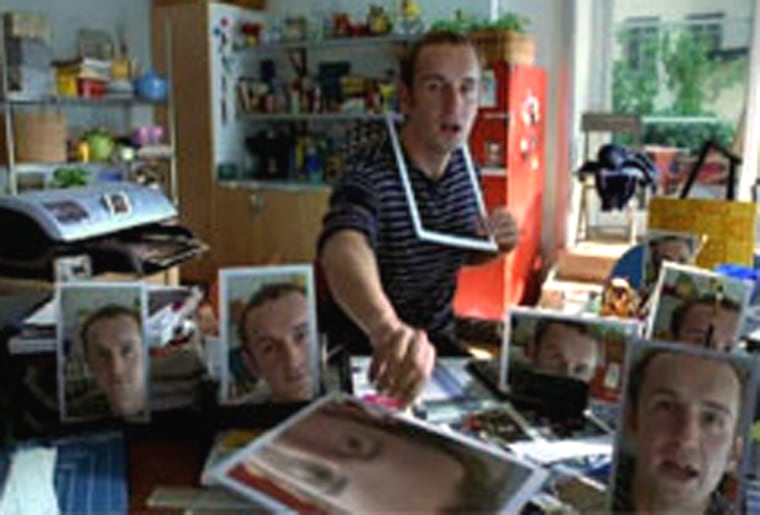You probably wouldn’t recognize him on the street, but by now you have surely seen what the man can do with his own portrait.
In Hewlett-Packard’s latest commercial, an unknown actor creates a collage of self-portraits out of thin air with a simple twist of a frame. The commercial features a catchy tune, special effects and his anonymous face. All that comes together to create an ad people actually stop to watch.
Steve Simpson and his team at Goodby, Silverstein and Partners made sure the new ad took that visual trickery to the next level. But the real creative force behind the ad was the actor who came up with the idea — the actor who wasn’t really an actor at all. His name is Francois Vogel and he's a French director.
“Most directors I wouldn't recommend putting them on camera. They’d be overbearing beasts,” says advertising Creative Director Steve Simpson.
But Vogel was an exception. Last year, he put himself in the test ad merely to demonstrate his idea. Then the creative team loved it — not just the ad, but the actor as well.
“The agency starts asking me, 'We think it would be nice that if you could do the actor and do exactly what you did on the test.' First, I thought they were joking,” Vogel says.
That first finished ad became a big success for Hewlett-Packard. It was so big, they used the same concept in all of their ads last year using the same technique for a different campaign.
Filming the new commercial was the easy part. It involved just Vogel and two empty frames. The difficulty was in nailing the performance.
Vogel choreographed his routine in order to capture multiple images within each frame.
“I have to adjust one frame to the other and if it’s not exactly perfect then you can’t do the trick,” Vogel says.
When the ad was first shot, Vogel was watching the monitor to make sure his movements were right — which of course caused his eye-line to be off. So the ad had to be shot again, and again, and again. His facial expressions had to be just right. The timing of when the frame was directly in front of his face had to be perfect. And he had to do it in one long, continuous take.
On the 37th take, Vogel nailed it.
Then the raw footage went to Chris Jones at Zoic Studios. Jones isolated the bits inside the picture frame, and froze them at just the right moment.
“You basically select the corners of the frame and tell the computer you want the image to always remain locked to these four points,” Jones explains. “He lifts up the frame and at the chosen moment we freeze that picture within the frame and then carry on or track that frozen image into the white bordered frame. It’s simply doing that over and over again, using the original layer as the base for the next layer.”
The frozen images remain electronically attached to those white edges, so that when Vogel moves the frame, the images move with it.
Finally, to make it look like it really is a bunch of snapshots, Jones adds motion blurs, reflections and color variations.
“It’s one of those things that the more you watch it, the more you find yourself asking what’s that all about. How did they do that?” Jones says.
For HP, the special effect provides 30 seconds of mesmerizing simplicity that its creators hope will make you stop in your tracks and watch.
“This is one of the spots that people stop and rewind Tivo for. And that’s a great accomplishment. It’s Tivo-proof,” Simpson says.
